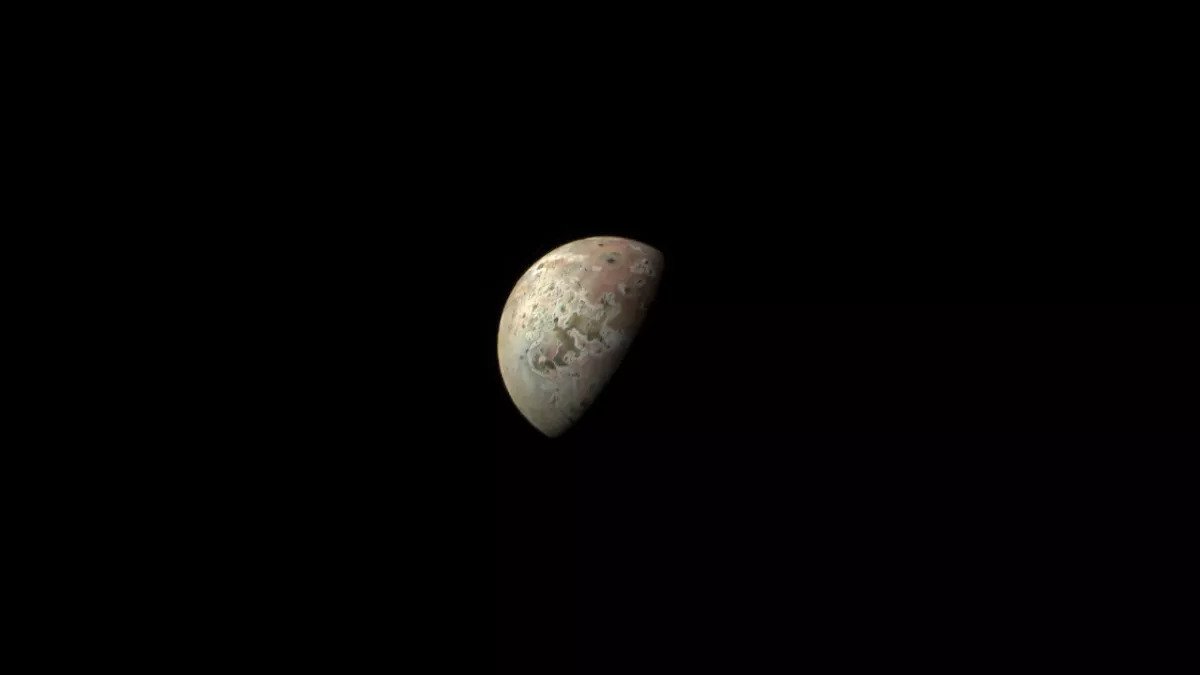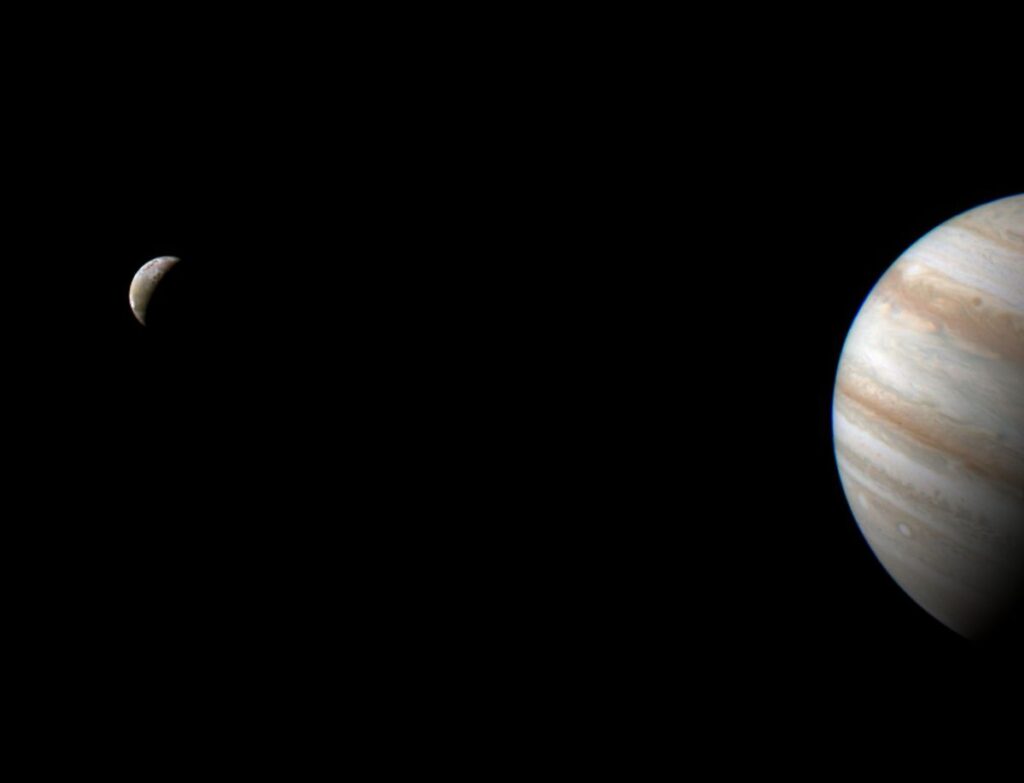NASA’s Juno spacecraft flew past Jupiter’s moon Io last week. It has taken amazing pictures of this volcanic world, which is rarely observed near spacecraft. They show its hot red surface.

Juno flew past a volcanic moon
NASA’s Juno spacecraft has been operating in the Jupiter system since 2016. It is now completing its 51st flyby of the planet. The most striking event that occurred during it was the flyby near Io. It took place on Tuesday, May 16, and already on 18, images of its surface, obtained by the cameras of the device, appeared on Twitter.
During this flyby, the smallest distance between the Juno spacecraft and the Io surface was only 35,500 km. This allowed the main camera of the visible spectrum of the JunoCam device to see the red-hot surface of the moon.
Juno has previously taken photos near two other Jupiter moons — Europa and Ganymede. But Io is not much like these icy worlds, under the surface of which the ocean hides. The main “decoration” of this celestial body are volcanoes and they can even be seen in the new photos as black dots covering the surface of the moon.

Why is Io so interesting to scientists?
In general, Juno was not created as an explorer of the moons of Jupiter. Its main goal from the beginning of the mission was to study the gas giant. The spacecraft studied its magnetosphere and the upper layer of clouds in detail. After that, it was decided to use its cameras to study the Galilean moons.
Io among them is interesting precisely for its volcanic activity. It is located at a distance of about 422,000 km from the upper gas giant. Therefore, gravitational forces deform it, causing the surface to crack, that’s what its general appearance shows. You can read more about this in our article.
Juno will continue its mission. And the current flight will not be the last one it has carried out. Already in December of this year, it will make a second such approach. And in February 2024, the spacecraft will pass record-breaking close to the volcanic moon — at a distance of only 1,500 km.
According to www.space.com
Follow us on Twitter to get the most interesting space news in time
https://twitter.com/ust_magazine

